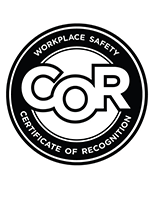Posted: Aug 9 '15

Hydrogen Sulphide (H2S) is a naturally produced, hazardous gas. It is often recognized by its rotten egg smell. In fact, some of its common names are sewer gas, stink damp, swamp gas, and manure gas. H2S occurs naturally in crude petroleum, natural gas, and hot gas. It is colourless, poisonous and flammable. Even though it has a strong odour, when concentrations are above 100 ppm (parts per million) it deadens a person’s sense of smell. You can’t rely on your nose as a defense against H2S; the best defense against this dangerous gas is H2S training.
In Alberta, H2S exposure can occur during drilling and production of natural gas, crude oil, and petroleum products. Our well drillers, tunnel workers, and miners run the risk of H2S exposure when they encounter underground pockets of the dangerous gas.
H2S is heavier than air and usually travels along the ground. Because of this, it tends to collect in low-lying and enclosed areas with poor ventilation. Workers are exposed by inhaling it when it is present it in the air. It quickly absorbs into the lungs even at low concentrations. Short-term exposure causes irritation to the nose, throat, eyes, and lungs. Repeated, long-term exposure has more serious side effects such as reduced lung function, anxiety, impaired learning and memory, headaches, eye inflammation, and fatigue. This is a result of less oxygen reaching the brain during the time of H2S exposure.

If you are in a business, such as oil and gas, where you know there is the potential for H2S exposure, it is vital to take preventive measures. Before a job starts, test the air for the presence and concentration of H2S with air monitoring equipment. If it is found, try to remove the gas from the air or provide a barrier between the gas and the workers. This can come in the form of ventilations or treatment methods involving liquid or gas streams. If the gas cannot be removed, the workers must wear personal protection equipment (ppe) such as self-contained breathing apparatuses (SCBA), goggles, and air purifying respirators.
Even in small amounts H2S exposure can be fatal. For this reason, proper safety training is required before you begin on any job site where it is present. At MI Safety our Enform H2S Alive training course is the most in-depth training you can receive on the topic anywhere in the world. Visit our website for more information on our hands-on approach to H2S training and our full schedule.
REQUEST INFO ON OUR COURSES





